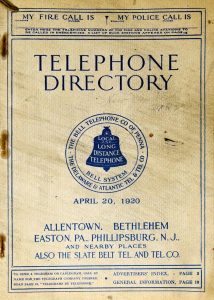In this two-part series, the expert researchers at Legacy Tree Genealogists share valuable tips for tackling “unknowns” that surface as a result of DNA testing. Maybe you came across an unexpected ethnicity; maybe you have some unknown parentage; maybe you just want to figure out how you’re connected to someone because you’ve looked at their tree and it doesn’t seem to connect. Regardless of the source of the mystery, you’ll need to do some sleuthing to figure it out. Here’s the second half of Legacy Tree Genealogists’ expert advice:
Public Record
Sometimes genetic cousins provide little information in conjunction with their DNA test results. They may not have a family tree themselves. They may not respond to requests for collaboration. Despite these shortcomings, it may still be possible to determine how they are related to a test subject or a group of matches by building a tree for them. Public records indexes found on many genealogy websites as well as people finder databases may help in extending their ancestry. Use every piece of available information including shared matches, usernames, email addresses, or reported residences to help identify living individuals. Once you have performed research on your family, you may need to perform additional DNA testing in order to prove the identity of a particular ancestor. Public record databases can also help you locate contact information for living individuals who might be invited to test.
- Even though Kelly had a close genetic cousin, that cousin had no family tree. By searching for that cousin’s username in public records databases, Kelly discovered that her match was a daughter of her first cousin.
- Daniel wanted to know the identity of his unknown grandfather and through his research narrowed it down to three candidates. He contacted a living descendant of each candidate and invited them to test. All three accepted the invitation and helped him solve the case.
Social Media
Even if genetic cousins may not have attached family tree information, they may have a strong social media presence that provides clues regarding their extended family. You might find other genetic cousins among their social connections. Even if their friends may not be visible, look for relatives commenting on their public posts. Posts for birthdays, marriages, deaths, old photographs, and reminisces can provide important details regarding family history as well as family relationships.
- Brian’s non-identifying information from his adoption file noted his maternal grandmother was a native of Greece. Brian’s closest genetic cousin posted a birthday wish on the Facebook profile of a relative: “To the Greek princess, a wonderful birthday.” His relative was the client’s mother.
- Judy was frustrated trying to figure out how she was related to three non-responsive matches. A search in their respective Facebook profiles revealed that they were all first cousins to each other.
Newspapers
 In addition to the enormous value that newspaper obituaries have for tracing descendants of an ancestor, finding living individuals, and proving relationships between collateral relatives, newspapers also can illuminate the context of the people, place, and time of a conception. Small towns often used newspapers as a chronicle of daily life and activities providing such important details as the attendees at a party, visits from out of town relatives, and local happenings.
In addition to the enormous value that newspaper obituaries have for tracing descendants of an ancestor, finding living individuals, and proving relationships between collateral relatives, newspapers also can illuminate the context of the people, place, and time of a conception. Small towns often used newspapers as a chronicle of daily life and activities providing such important details as the attendees at a party, visits from out of town relatives, and local happenings.
- Research on the family of Charles, an adoptee, resulted in identification of several candidates from two families. A newspaper article from around the date of his conception showed that his biological mother was visiting from out of town and that his biological father was present at a party held in her honor.
- Growing up, Frederick’s father was very secretive about his origins and family. Genetic relationships to paternal relatives revealed that Fredrick’s father was related to a family in Illinois, but it was unclear how. A series of newspaper articles revealed that a member of that family disappeared without a trace in the 1930s and was never heard from again. Targeted testing confirmed that George’s father was the son who had disappeared.
Censuses
Census records provide snapshots of families and communities at regular intervals and help show who was in the same place at the same time. U.S. Censuses after 1880 also state family relationships and can provide easily accessible direct evidence for generational linkages between proposed relatives. More recent censuses in urban areas frequently provided street addresses for the residences of families giving geographic context to an investigation. Even in rural areas, households were often enumerated based on their proximity to one another. Boarders, neighbors, and nearby families can sometimes be identified as the DNA contributors in unexpected relationship scenarios.
- Chad was surprised he did not share Y DNA with anyone with his same surname. Instead, he shared Y DNA with several individuals with the Bollinger surname. His great-great-grandfather was born in 1861 and an 1860 U.S. Census for his third great-grandparents showed that they were next door neighbors to Francis Bollinger.
- Doris’s great-grandmother was a showgirl with a stage name who died when Doris’s grandmother was still a very young girl. Genetic connections to a family in South Carolina and a 1900 U.S. Census record resulted in identification of a candidate. It also led to identification of living testing candidates to confirm the research hypothesis.
- Doug’s surname is Neal. His Y-DNA matches are all Prices. Doug’s fourth great-grandfather was from North Carolina and the state census for 1787 shows several Neal and Price households in the same community.
City Directories
 If an ancestor with unexpected or unknown parentage was born between census dates, or if you discover recent unknown ancestry after the time when most censuses are available, city directories offer an excellent supplement and substitute for exploring the residences, occupations, and geographic contexts of a conception event.
If an ancestor with unexpected or unknown parentage was born between census dates, or if you discover recent unknown ancestry after the time when most censuses are available, city directories offer an excellent supplement and substitute for exploring the residences, occupations, and geographic contexts of a conception event.
- Gina’s great-great-grandfather was born out of wedlock in Pittsburgh in the 1890s, but city directories show that his mother was residing within a quarter of a mile of a man who appeared in the family tree of several genetic cousins.
- Clyde’s mother was born out of wedlock in Georgia in the 1940s. Genetic relationships reveal connections to a family of five brothers, any one of whom could have been her father. Clyde’s maternal great-grandmother was living within a mile of four of the brothers and across the street from one of them.
- Frank was left in an abandoned Philadelphia apartment building at a few hours old. A member of a family who show strong genetic connections to Frank’s DNA was living in the apartment building next door.
Genetic genealogy is an immensely powerful tool which can help solve mysteries of unknown ancestors and unknown origins. On the other hand, DNA testing may result in the discovery of unanticipated, unexpected or unknown relationships. Regardless of whether genetic genealogy is used to address an unknown or is the means of uncovering one, DNA test results must be considered within the context of traditional document evidence in order to adequately identify the right people in the right place at the right time.
************************
Are you struggling to make sense of an unexpected result in your DNA test? Do any of the scenarios above sound similar to your own situation? Are you seeking unknown ancestors in your family tree through genetic evidence? Legacy Tree Genealogists has experienced researchers who would love to help you consider both the genetic and documentary evidence for your case. To request a free consultation, visit https://legacytree.com/rootsfinder.
If you missed part one of this series, you can find it here: https://www.rootsfinder.com/blog/using-document-evidence-to-resolve-the-unknown-in-your-dna-results-part-1/




[…] These are just a few sources to start with. Ready for more sources? Jump to Part 2 of this series. […]